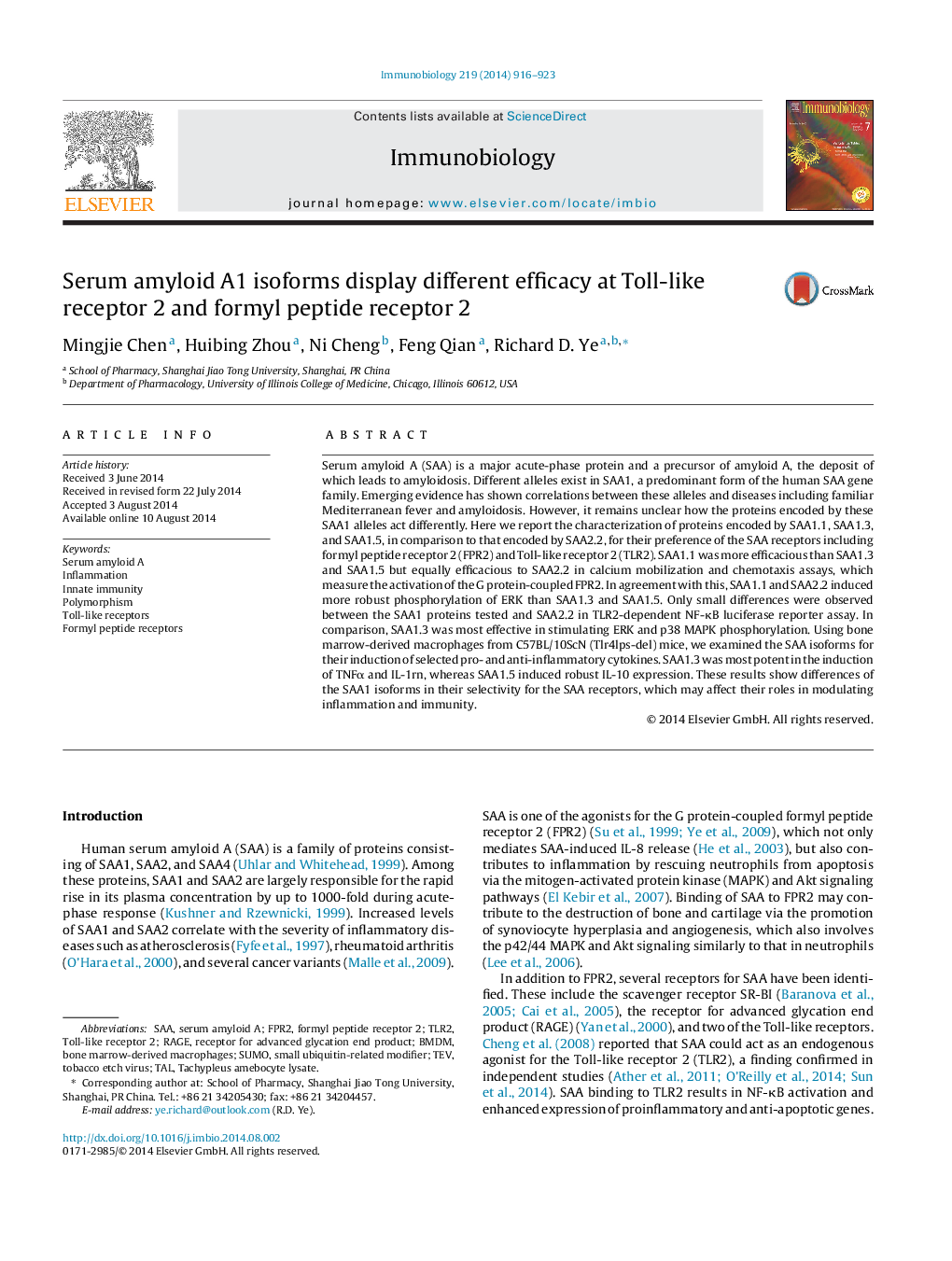| کد مقاله | کد نشریه | سال انتشار | مقاله انگلیسی | نسخه تمام متن |
|---|---|---|---|---|
| 2182815 | 1095518 | 2014 | 8 صفحه PDF | دانلود رایگان |

Serum amyloid A (SAA) is a major acute-phase protein and a precursor of amyloid A, the deposit of which leads to amyloidosis. Different alleles exist in SAA1, a predominant form of the human SAA gene family. Emerging evidence has shown correlations between these alleles and diseases including familiar Mediterranean fever and amyloidosis. However, it remains unclear how the proteins encoded by these SAA1 alleles act differently. Here we report the characterization of proteins encoded by SAA1.1, SAA1.3, and SAA1.5, in comparison to that encoded by SAA2.2, for their preference of the SAA receptors including formyl peptide receptor 2 (FPR2) and Toll-like receptor 2 (TLR2). SAA1.1 was more efficacious than SAA1.3 and SAA1.5 but equally efficacious to SAA2.2 in calcium mobilization and chemotaxis assays, which measure the activation of the G protein-coupled FPR2. In agreement with this, SAA1.1 and SAA2.2 induced more robust phosphorylation of ERK than SAA1.3 and SAA1.5. Only small differences were observed between the SAA1 proteins tested and SAA2.2 in TLR2-dependent NF-κB luciferase reporter assay. In comparison, SAA1.3 was most effective in stimulating ERK and p38 MAPK phosphorylation. Using bone marrow-derived macrophages from C57BL/10ScN (Tlr4lps-del) mice, we examined the SAA isoforms for their induction of selected pro- and anti-inflammatory cytokines. SAA1.3 was most potent in the induction of TNFα and IL-1rn, whereas SAA1.5 induced robust IL-10 expression. These results show differences of the SAA1 isoforms in their selectivity for the SAA receptors, which may affect their roles in modulating inflammation and immunity.
Journal: Immunobiology - Volume 219, Issue 12, December 2014, Pages 916–923